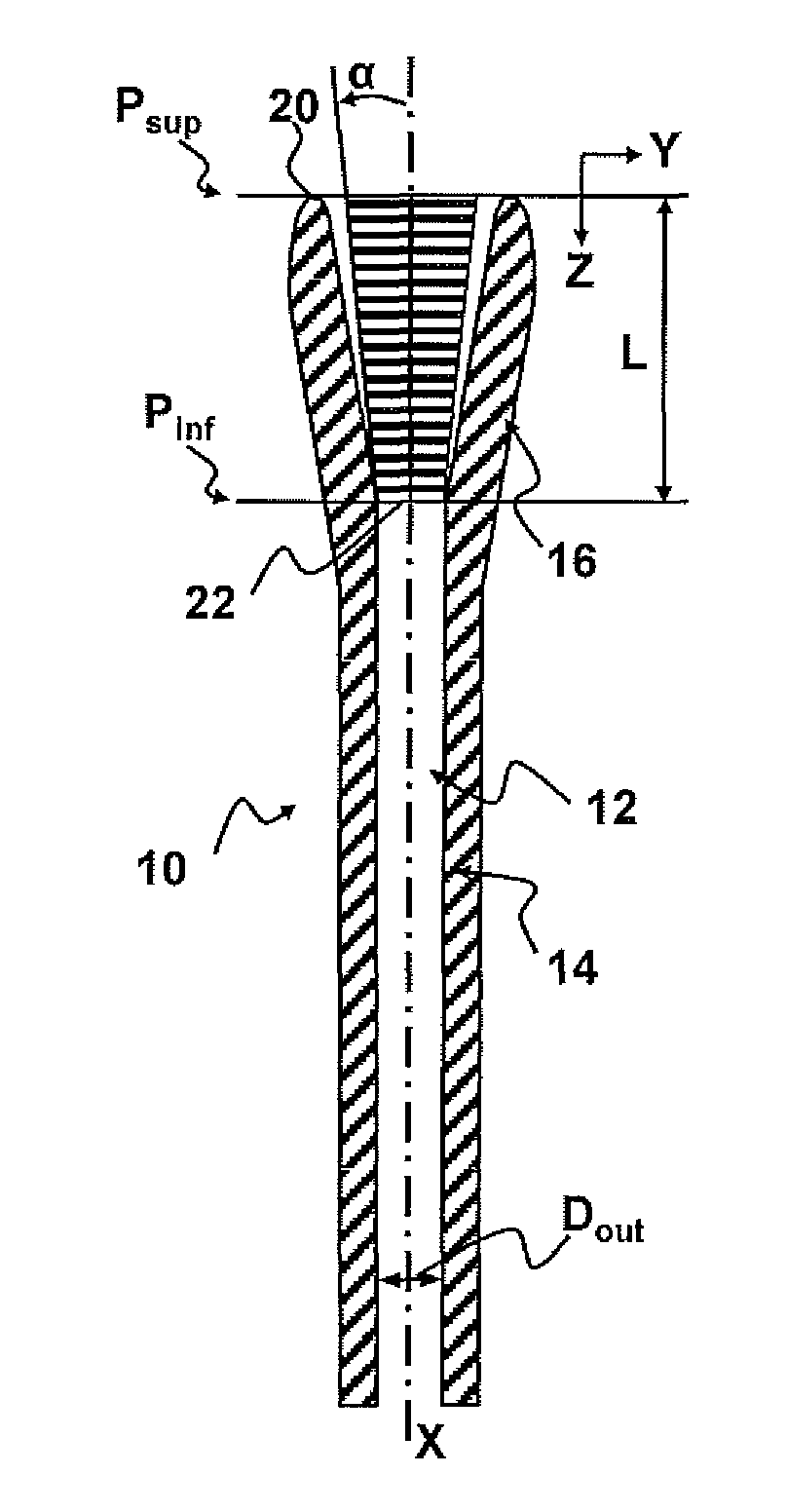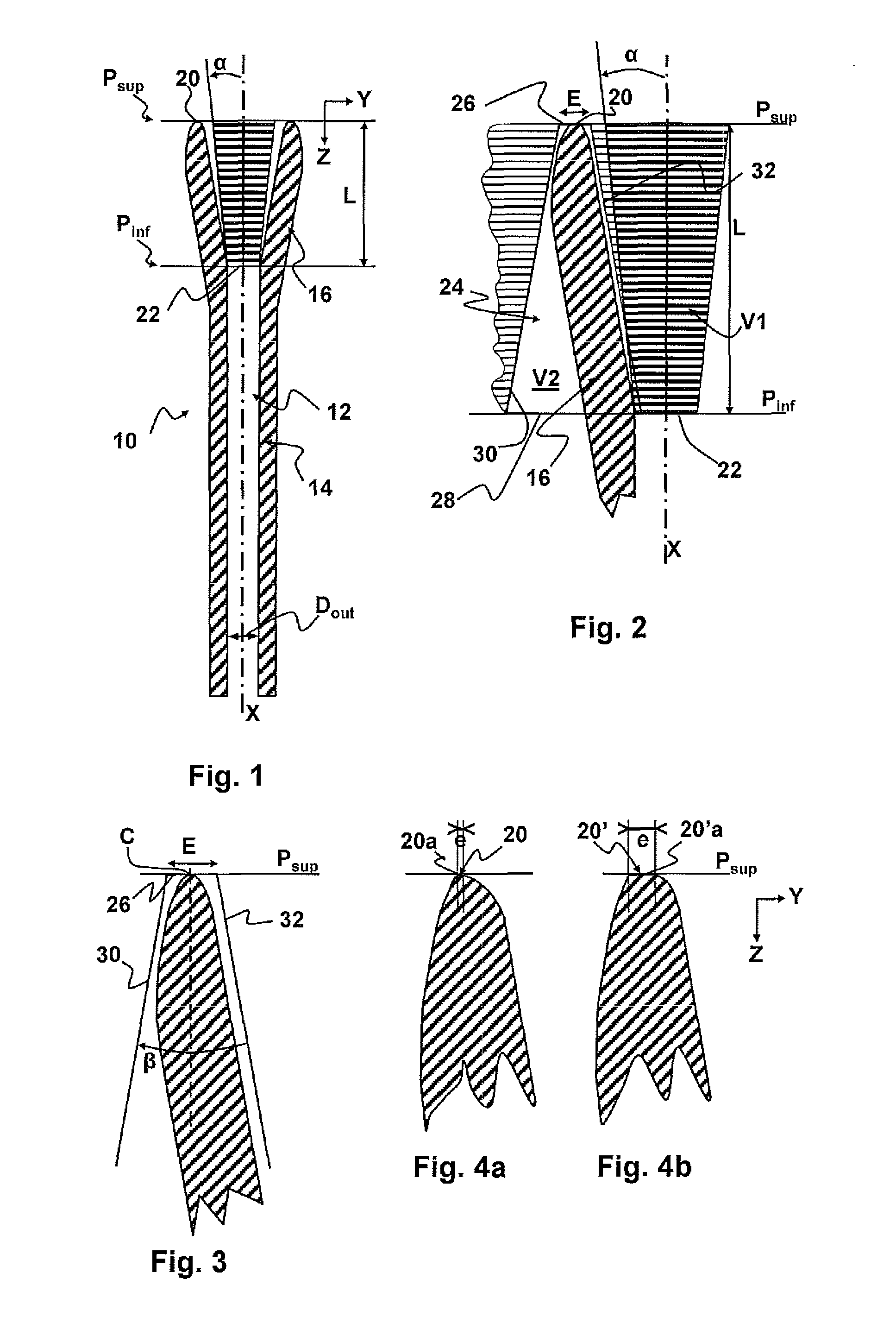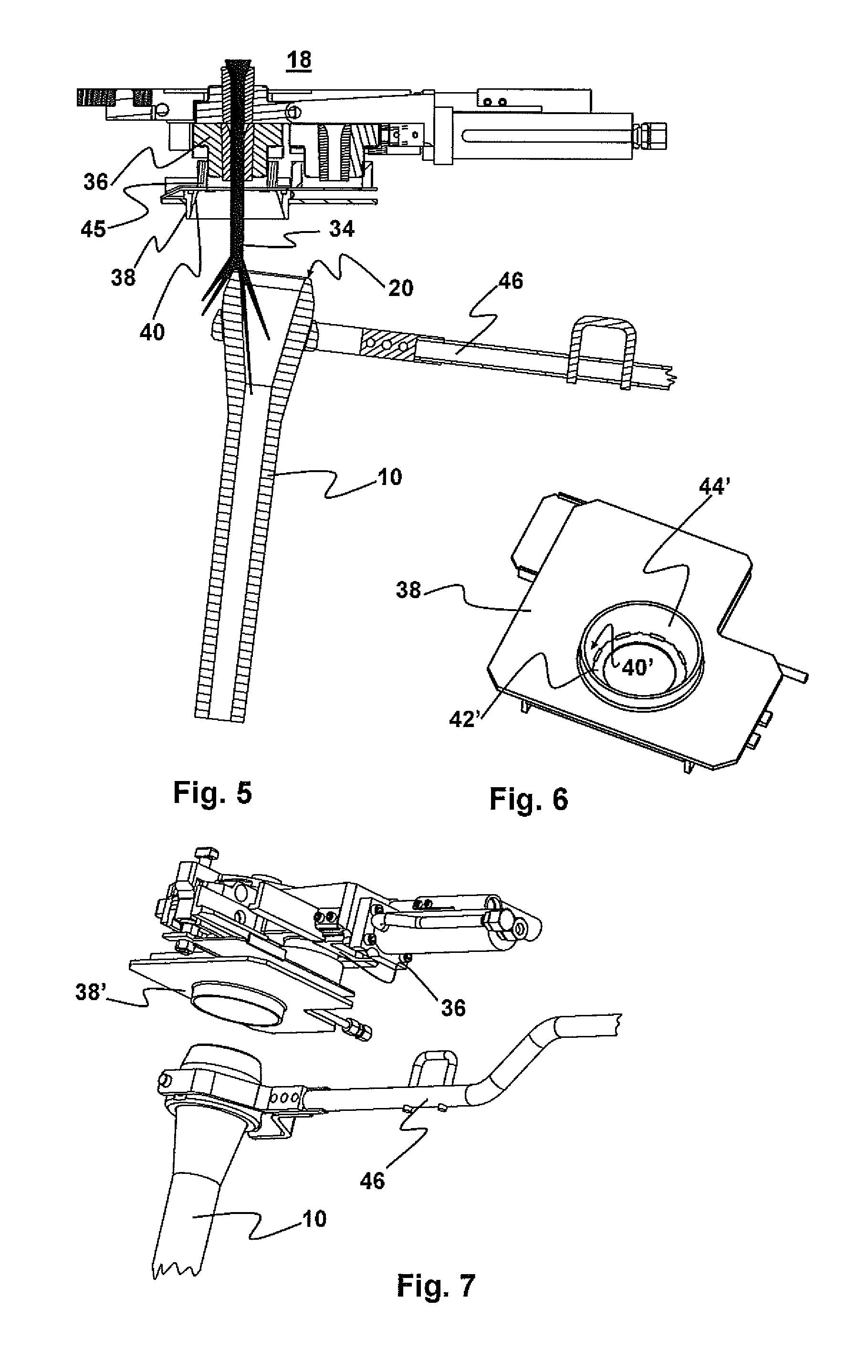Tube for pouring liquid metal, assembly of a tube and a metal frame and metal frame
a technology for liquid metal and tubes, applied in the direction of machine supports, household objects, applications, etc., can solve the problems of affecting the safety of operators, and achieve the effects of limiting splashing, reducing risk, and reducing the risk of operators
- Summary
- Abstract
- Description
- Claims
- Application Information
AI Technical Summary
Benefits of technology
Problems solved by technology
Method used
Image
Examples
Embodiment Construction
[0033]FIG. 1 depicts a tube 10 for pouring liquid metal from a metallurgical container 18 part of which is visible in FIG. 5. In this example, the container 18 is a tundish bath and the tube 10 is a shrouding tube for transferring the metal from the tundish 18 to a continuous casting mould (for example a billet mould; not depicted in the figures).
[0034]The tube 10 delimits a pouring channel 12, having a pouring axis X that coincides with the vertical direction Z when the tube is in the pouring position, against the container 18. The tube 10 comprises a downstream part 14, positioned at the end from which the liquid metal emerges, and an upstream part 16 positioned at the end from which the liquid metal enters the tube, at the container 18 end.
[0035]The downstream part 14 is cylindrical, its interior surface and its exterior surface each having as their directrix curve a circle the centre of which is on the pouring axis and having as their directrix straight line the pouring axis X. ...
PUM
| Property | Measurement | Unit |
|---|---|---|
| angle | aaaaa | aaaaa |
| angle | aaaaa | aaaaa |
| angle beta | aaaaa | aaaaa |
Abstract
Description
Claims
Application Information
 Login to View More
Login to View More - R&D
- Intellectual Property
- Life Sciences
- Materials
- Tech Scout
- Unparalleled Data Quality
- Higher Quality Content
- 60% Fewer Hallucinations
Browse by: Latest US Patents, China's latest patents, Technical Efficacy Thesaurus, Application Domain, Technology Topic, Popular Technical Reports.
© 2025 PatSnap. All rights reserved.Legal|Privacy policy|Modern Slavery Act Transparency Statement|Sitemap|About US| Contact US: help@patsnap.com



